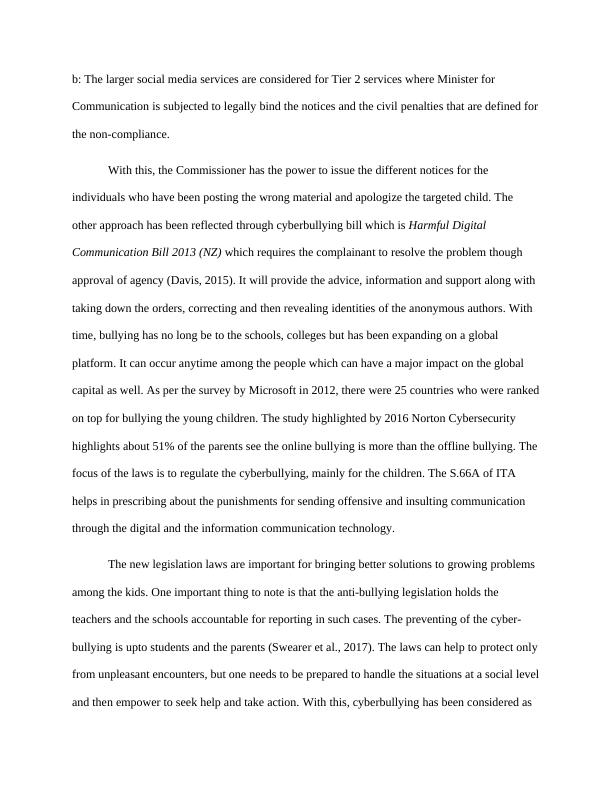Introduction of New Legislation to Address Cyber Bullying
4 Pages1243 Words83 Views
Added on 2023-03-20
About This Document
This article discusses the reasons for the introduction of new legislation to deal with the problem of cyber bullying. It explores the Criminal Code Act 1995 (Cth) in Australia and the Enhancing Online Safety Act 2015. The article also highlights the importance of anti-bullying laws and policies in protecting individuals from online harassment.
Introduction of New Legislation to Address Cyber Bullying
Added on 2023-03-20
ShareRelated Documents
End of preview
Want to access all the pages? Upload your documents or become a member.
Adequacy of Current Cyber Bullying Laws in Criminal Code
|7
|1681
|53
Cyberbullying Laws - Assignment
|8
|2236
|143
Law Reform on Emerging Technological Issues: Impact on Individuals
|13
|795
|458
Finding Best Cyberbullying Intervention Program for Students
|9
|2045
|430
Cyberbullying as a Criminal Offence
|3
|524
|431
Online Safety Bill 2021 Cth: Implications and Effects on Online Users and Service Providers
|9
|2160
|410


